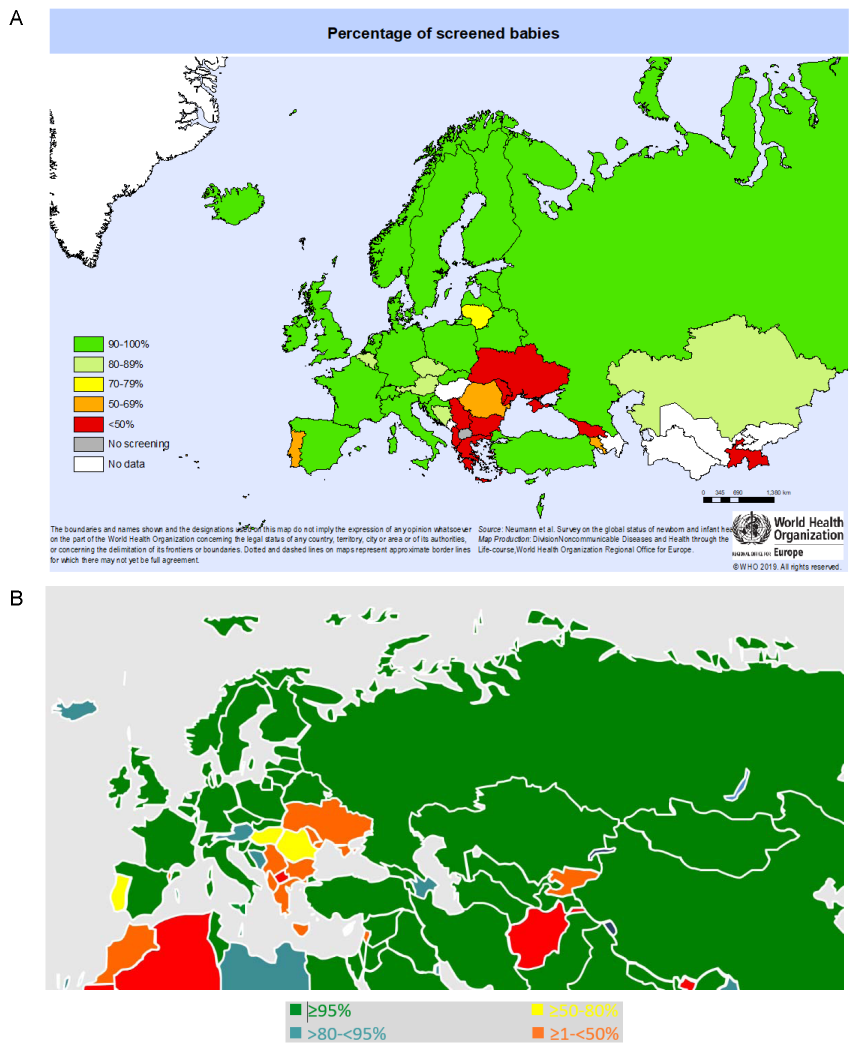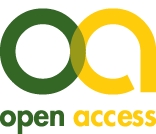41. Wissenschaftliche Jahrestagung der Deutschen Gesellschaft für Phoniatrie und Pädaudiologie (DGPP)
41. Wissenschaftliche Jahrestagung der Deutschen Gesellschaft für Phoniatrie und Pädaudiologie (DGPP)
Recent Developments in the Global Status of Newborn Hearing Screening
Abstract
Background: In 2020, we have published the results of a survey on the global status of newborn hearing screening (NHS). The survey revealed that 38% of the global population had no or minimal hearing screening, while 33% had universal screening. The median prevalence of neonatal permanent hearing loss was 1.70 per 1,000 infants. Since then, many countries have improved their NHS programs, but resource scarcity and war threaten their sustainability. Therefore, the aim of a follow-up survey is to gather updated information on the current international NHS status, which is one of the three tracer indicators of the WHO for progress in ear and hearing care.
Material & methods: We have sent out an updated questionnaire to the members of the International Newborn and Infant Hearing Screening (NiHS) group, a network of professionals and in Ear and Hearing Care from more than 160 countries.
Results: So far, more than 40 countries from nearly all continents agreed to deliver updated NHS information or provided it already. At currrent, a first data analysis is performed.
Conclusion: The results of the new NHS survey will be implemented in the WHO status report on the global progress of ear and hearing care to be published in 2026.
Text
Background
Undetected or inadequately addressed permanent childhood hearing loss (PCHL) has a profound impact on children’s development. Newborn hearing screening (NHS) is a cost-effective intervention that reduces the age of diagnosis and initiation of treatment, leading to improved language, cognitive, socio-emotional, and academic outcomes in children with PCHL.
The World Report on Hearing [1], published by the World Health Organization (WHO) in 2021, designated the effective coverage of NHS as one of three tracer indicators for monitoring progress in ear and hearing care. It calls for a 20% increase in global NHS coverage by 2030 [1]. The report also cites findings from a global survey on the status of NHS [2], which revealed that in the 2013–2019 period 38% of the world’s population had no or only minimal access to hearing screening, while 33% were covered by universal programs. The median prevalence of neonatal permanent hearing loss was reported at 1.70 per 1,000 infants. Infants with PCHL who underwent screening were diagnosed at a mean age of 4.6 months and typically begun intervention by 6.7 months – within a developmental window when auditory-related brain structures remain highly responsive to treatment. In contrast, unscreened infants were diagnosed and started intervention much later, at average ages of 34.9 and 36.7 months, respectively. The average referral rate (i.e., infants failing the screening) was 4.5%, and this rate was notably lower in countries with high NHS coverage. However, 17.2% of children who failed screening were lost to follow-up. Countries with high NHS coverage tended to have, on average, a tenfold higher standard of living than those with coverage below 10%. Furthermore, the presence of governmental mandates for NHS is moderately correlated with screening coverage (ρ=0.51) [2], [3].
Although many countries have since strengthened their NHS programs, challenges such as limited resources and armed conflicts now threaten their sustainability. A follow-up survey currently underway aims to provide updated data on the global status of NHS implementation.
Material and methods
We have sent out an updated questionnaire to the members of the International Newborn and Infant Hearing Screening (NIHS) group, a network of professionals and in Ear and Hearing Care from more than 160 countries. The questionnaire contains items on the (a) proportion of newborns who received NHS within the first year of life, relative to the number of live births in the reporting years 2023 or 2024, (b) screening population, i.e., universal screening of all newborns in a country, state, region, or facility vs. targeted screening of at-risk newborns only, (c) type of screening method used, (d) screening protocol, i.e., one-stage vs. two-stage screening approach, (d) percentage of infants who failed the initial screening and received a rescreening at the same facility, (e) referral rate, (f) number of diagnosed PCHL cases per 1,000 live births, (g) median or mean ages at diagnosis and intervention onset of PCHL for screened and unscreened infants, (h) estimated percentage of screened and unscreened infants with PCHL who received intervention before 6 months of age, (i) legal mandate for universal or risk-based NHS, (j) location of screening, (k) professional groups performing the screening, (l) proportion of birth facilities in the country implementing NHS.
Results
So far, more than 40 countries from nearly all continents have provided updated NHS information or announced it. At current, the data from European countries are analyzed. A former analysis of the European NHS situation based on data gathered from 2013 to 2019 had revealed that the screening coverage in some countries, measured by percentage of screened babies, was not sufficient to comprehensively detect PCHL early. The policy support for hearing screening varies from no statement to strong recommendation or legislation. Only 17 countries had standardized protocols used by all hospitals or centers and only 8 countries had benchmarks and quality indicators [4] (Figure 1A [Abb. 1]).
Figure 1: Coverage of NHS programs in Europe (A) based on the 2013–2019 period alone ([4], © WHO 2019) and (B) combining new data from 18 countries with data of the 2013–2919 period from the remaining countries
As part of the follow-up survey, 18 European countries have responded to date (Figure 1B [Abb. 1]). Of these, 12 reported having achieved the highest benchmark of =95% screening coverage. Fourteen countries had improved their coverage rates since the previous survey, one reported a decrease, and two maintained consistently high levels. Several Balkan countries reported either no screening or low coverage. In contrast, Albania significantly increased its coverage from 3.6% to 22%.
Discussion
Most European countries have established well-functioning NHS programs, with many demonstrating improvements in recent years, as evidenced by high coverage rates. However, comprehensive data collection and analysis are only conducted in a subset of countries. This limitation introduces potential bias in estimates of referral and lost-to-follow-up rates, prevalence figures, and median or mean ages of diagnosis and treatment initiation. Coverage remains lowest in parts of the Balkans and has even declined in at least one country.
Conclusion
While many European countries have made progress in expanding NHS coverage, further improvement is needed, particularly in regions with limited or declining screening rates. Data collection for the ongoing follow-up survey is still underway, and its findings will contribute to the upcoming WHO Status Report on Global Progress in Ear and Hearing Care, scheduled for publication in 2026.
References
[1] World Health Organization. World Report on Hearing. Geneva, Switzerland: World Health Organization; 2021 [cited 2025 June 29]. Available from: https://www.who.int/publications/i/item/world-report-on-hearing[2] Neumann K, Euler HA, Chadha S, White KR; International Newborn and Infant Screening (NIHS) Group. A survey on the global status of newborn and infant hearing screening. Journal of Early Hearing Detection and Intervention. 2020;5(2):63-84. DOI: 10.26077/a221-cc28
[3] Neumann K, Mathmann P, Chadha S, Euler HA, White KR. Newborn Hearing Screening Benefits Children, but Global Disparities Persist. J Clin Med. 2022 Jan 5;11(1):271. DOI: 10.3390/jcm11010271.
[4] Neumann K, Carai S, Hülsen V, Maier P, Schwarz K, Weber M. Newborn hearing screening in the European Region [Poster]. In: WHO Conference on Screening; 2020 Feb 11-12; Copenhagen, Denmark.




